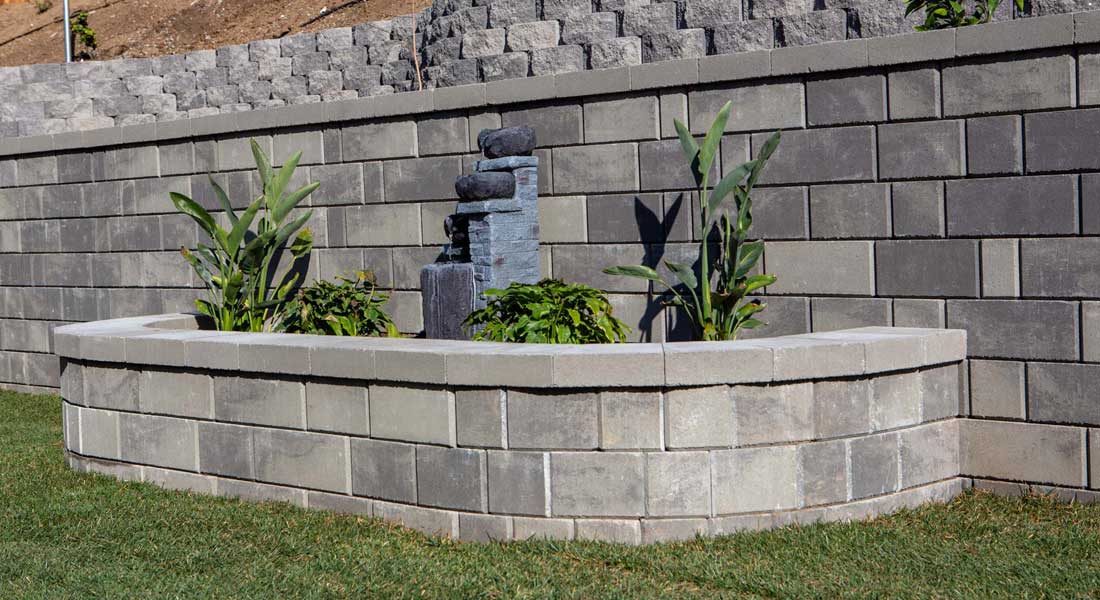Although type s mortar must have a minimum compressive strength of 1 800 psi it is often mixed for strengths between 2 300 and 3 000 psi.
Mortared concrete block retaining wall vs srw.
Simply stack them in rows or mix heights within a row for a random look.
Wide and at several lengths and heights.
Without joints poured walls possess a greater lateral strength which essentially means they have a greater ability to resist pressure presented by water and the soil.
You don t need mortar with a stone retaining wall.
The dry stack construction technique allows the incidental water to escape by flowing around the blocks and out the.
Type s is the common choice for many below grade applications such as masonry foundations manholes retaining walls and sewers as well as at grade projects like brick patios and walkways.
The hollow block wall is depending solely on the strength of the thin mortar bed between each concrete block.
Mortared concrete block and cast in place concrete walls involve highly paid skilled labor and take more time to install and they will need stone or brick facings if aesthetics are important.
The last home i built for my family had a giant poured concrete foundation but in the backyard i used concrete block to build a magical serpentine retaining wall that looks as good today as the.
The addition of reinforcing steel to either wall system complicates the issue.
Step 2 install steel reinforcing.
Earthworks retainers work on standard concrete block and create a mechanical connection with geogrid making it a winning combo for strength and longevity.
As with a concrete block wall build a firm gravel base and ensure good drainage.
Concrete blocks are manufactured in units ranging from 4 inches to 12 inches in width but the most commonly used block has dimensions of 8 inches x 8 inches x 16 inches.
For example you can make a concrete block wall stronger than a poured concrete wall by simply adding some reinforcing steel and additional mortar to the.
The stone is split at the quarry either 8 in.
Incidental water moves easily through a vertical drain that is formed by the layer of wall rock placed behind the block and in the block cores.
After the concrete blocks are laid the voids can be filled with a cement based mortar or poured concrete that contains small pea gravel.
Calculate the amount of mortar and the number of blocks needed to construct the wall.
Water and weather wear down the mortar over time and can causes leaks.
Poured concrete foundation walls are arguably stronger than cinder block foundation walls.
The hollow core design combines with mortarless construction to allow water to drain freely from behind the segmental retaining wall.
In 1986 allan block introduced its first segmental retaining wall block srw.









